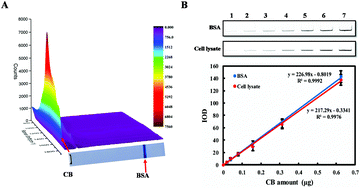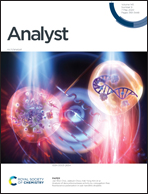An SDS-PAGE based method for the quantification of carbon black in biological samples†
Abstract
Carbon black (CB) has a wide range of industrial applications and recently has been used as the basic model for environmental health studies on airborne particulate matters (PM). Exposure characterization of CB is always the first and most important step towards a better understanding of its effects on human health. However, efforts were largely limited by the lack of valid methods capable of quantifying CB in biological samples. Here, we developed a new method based on sodium dodecyl sulfate-polyacrylamide gel electrophoresis (SDS-PAGE) for CB quantification in bio-samples, with a detection limit of 4.3 ng. The method is so economical and convenient that it can be performed in most biology labs. The application of the method was successfully demonstrated in three different cell models (mouse macrophage cells (Raw264.7), human epithelial cells (A549) and mouse mesenchymal stem cells (MSC)) and the results showed that the uptake rates decrease in the order of MSC > Raw264.7 > A549. The surprisingly highest uptake rate of MSC deserves further investigation. The novel method provides a complementary quantitative tool to the use of conventional methods such as radioactive and fluorescent labeling and may facilitate related toxicological studies.



 Please wait while we load your content...
Please wait while we load your content...